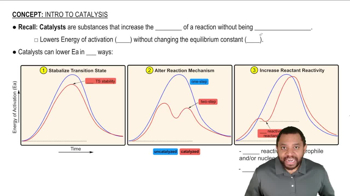Propose products (if any) and mechanisms for the following AlCl3-catalyzed reactions:
c. 3-chloro-2,2-dimethylbutane with isopropylbenzene
 Verified step by step guidance
Verified step by step guidance Verified video answer for a similar problem:
Verified video answer for a similar problem:



 4:29m
4:29mMaster Activity and Directing Effects with a bite sized video explanation from Johnny
Start learning